
Why Go
Ecuador's crown jewel, the Galapagos Islands combine stunning coast, deep jungle regions, and even volcanoes. It's no wonder that thousands of adventurous travelers flock to the islands each year for a glimpse at exotic wildlife and the chance to frolic in turquoise waters. Officially discovered by a Spanish ship en route to Panama from Peru, legend has it that the Inca got there first. The name “Galapagos” comes from the old Spanish word for saddle, since the shell of the Galapagos turtle looked a lot like a type of saddle used back in Spain.
Today, the islands serve as a paradise for visitors to cruise, dive, and explore. Horseshoe bays and sunny skies welcome travelers fresh off the plane from Guayaquil and Quito. Divers make pilgrimages to the surrounding waters while wildlife lovers hop on cruises to islands teeming with sea lions, blue-footed boobies, and pink flamingos. In fact, it's tough to say who has it better, the adventurers or the animal lovers. Everywhere one turns there is wildlife both above and below the sea.
In the past, the independent traveler yearning to take a break from the beaten track had no choice but to join organized tours and cruises in order to see the various islands in the archipelago. Today, there are options that combine one's thirst for adventure with an altruistic approach, including a three-week adventure travel/volunteer trip that puts travelers up close with the people who live on the islands of Santa Cruz, San Cristobal, and Isabela.

A Basic Overview of Volunteering in the Galapagos
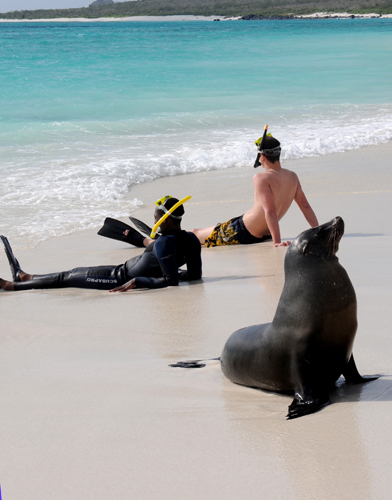 The Galapagos Islands are Ecuador's biggest tourist attraction for a good reason: it's an experience that seldom leaves guests anything but blown away. A downside to all of these visitors arriving is that the islands themselves suffer. The amount of boats and people that make their way through does have a negative environmental impact, which is something those excited about scenery should be thinking about.
The Galapagos Islands are Ecuador's biggest tourist attraction for a good reason: it's an experience that seldom leaves guests anything but blown away. A downside to all of these visitors arriving is that the islands themselves suffer. The amount of boats and people that make their way through does have a negative environmental impact, which is something those excited about scenery should be thinking about.
While the Galapagos park's director works to put measures in place to ensure that the islands will still be alive and vibrant in the future by restricting tourism which detracts from the natural harmony of the islands, small independent volunteer/travel agencies run programs designed toward tourism which helps instead of hurts. These programs help to rebuild the ecosystem by removing invasive species of plants brought in on ships and then replant native strains so that they may prosper again. The work combines active adventure with sightseeing and relaxation. Included in the costs are home-cooked meals and accommodation, transportation once at your destination, and on-hand support ranging from medical emergencies to help with local amenities.
Lead Adventurers led the way in this approach to eco-friendly travel in the Galapagos. Lead was originally started as the in-country operations and support for student volunteer groups and still operates trips for Real Gap Year and Gap Year Experience for Grown Ups. They constantly monitor their partners who run their volunteer programs and have the experience and contacts to make them effective and fun. They run the popular three-week volunteer program to Santa Cruz, San Cristobal, and Isabela. While not the Peace Corps or Doctors Without Borders, Lead's Galapagos Experience is a valuable primer for those interested in conservation in the Galapagos. Volunteers are treated as part of the teams which have worked over 20 years to make sure that the environment of the Galapagos thrives despite the hurdles it faces.

Week One – Santa Cruz
 The trip starts with an orientation in Quito by a well-respected biologist from Finding Species, a non-profit organization committed to conserving, preserving, and sustaining the environment in the Galapagos. Volunteers learn why the work they are undertaking is important as well as the history of the islands from their creation to the present.
The trip starts with an orientation in Quito by a well-respected biologist from Finding Species, a non-profit organization committed to conserving, preserving, and sustaining the environment in the Galapagos. Volunteers learn why the work they are undertaking is important as well as the history of the islands from their creation to the present.
The following day, volunteers fly to Santa Cruz and spend the first day exploring the island. Secluded beaches at the end of sandy paths, vibrant scenery, and the expertise of local tour guides makes getting acclimatized a cinch.
The second day, volunteers go to an orientation at Puerto Ayora in the morning and then start at the projects station in the afternoon. They spend time together replanting native species of plants and helping in the projects nursery. After a day and a half working on the project, they head back to town and have the next day off to enjoy the island.
Santa Cruz is a base for scuba diving operators and also has plenty of beaches to snorkel and explore. As it is a port, it has many beachfront restaurants and bars to find fresh local seafood and fellow explorers. Scuba trips leave early in the morning and take avid divers to the amazing sights nearby, like Floreana Island, where nine stunning dive sites attract travelers from around the world.
Volunteers stay in a centrally-located hostel and in dorm-style accommodation whilst at the station. The hostel and the station provide meals of typical local food, prepared with produce grown in the station’s garden.
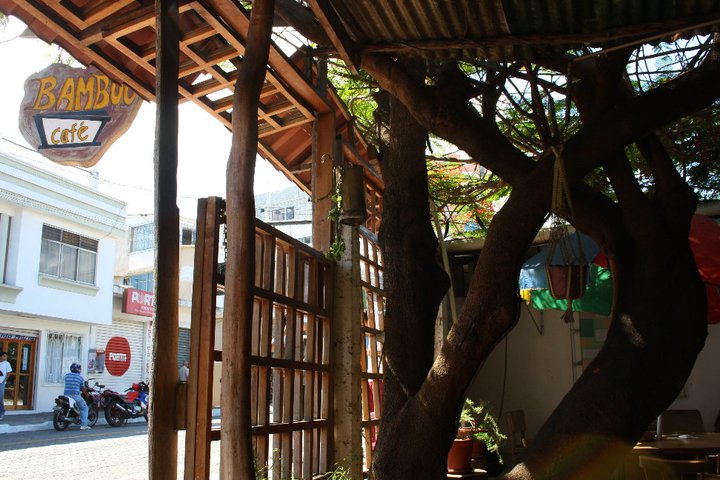
What to Do in Santa Cruz
Those born to scuba dive will be in seventh heaven in Santa Cruz. The Galapagos’ natural diversity is due in part to the combination of warm and cold currents converging around the Islands. On a day trip from Santa Cruz to Floreana, divers can swim alongside stingrays, eagle rays, turtles, long nose hawkfish, barracudas, pelagic fish, white tip reef sharks, Galapagos sharks, and hammerhead sharks. It’s also known as the place in the Galapagos to dive with sea lions. The sites feature a spectrum of coral and shimmering schools of fish darting back and forth under the blue waters. Day tours with the leading PADI-certified dive company, Scuba Iguana, cost $195. They depart at 7:30 in the morning and include two dives, transportation by boat, equipment, lunch and snacks.
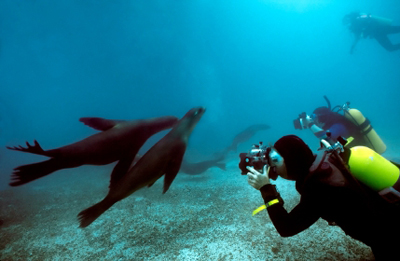
Exploring by sea kayak is a must for adventurous travelers. A three-hour guided tour of the hidden caves and bays of Santa Cruz takes paddlers off the beaten track and though areas teaming with lizards, iguanas, blue footed boobies, and plenty of famous wildlife that Darwin discovered long ago. Tour companies and hotels rent kayaks on Tortuga Bay beach for five dollars an hour.
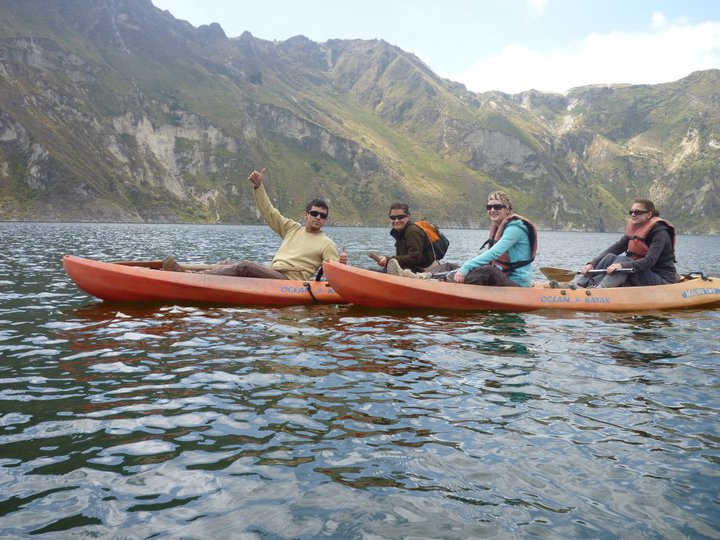
Although better known for its coast, Santa Cruz's inland terrain pits explorers against hills and valleys which traverse the farms. Small communities scattered amongst the vast vegetation and few remaining farms make for exciting scenery while mountain biking. Bikes are available for three dollars an hour from Lonesome George Travel Agency (corner of Av Opuntia & Av Padre Julio Herrera).
Grab your snorkeling gear at Lonesome George Travel Agency for eight dollars a day and walk 30 minutes to the bleached sandy beach at Tortuga Bay. Turtles, sea lions, marine iguanas, pelicans, flamingos and lava gulls frequent the beach, with snorkelers heading to the west end to explore the terrain under the sea and play with the creatures that call it home.

Week Two – San Cristóbal
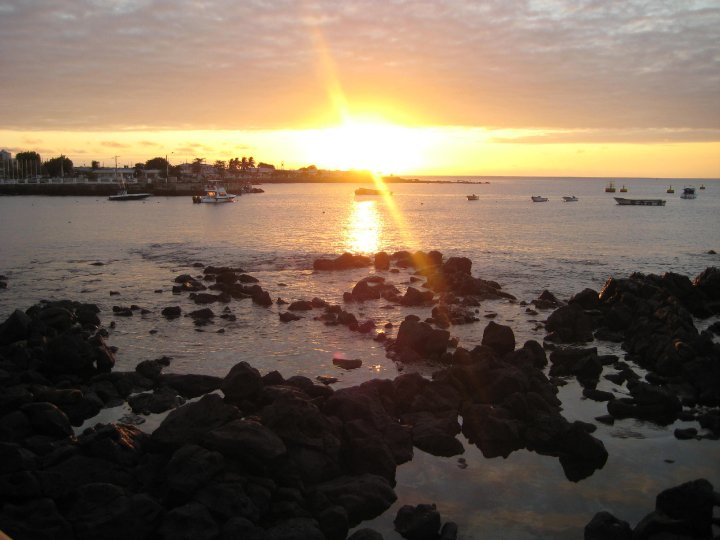
 After two free days exploring Santa Cruz, volunteers leave the island at the start of the week and head to San Cristobal by motorboat. San Cristobal was first inhabited permanently by a colony named Progresso in 1869, which, despite its tyrannical leader who would die an early death, managed to survive and flourish. Today, San Cristobal is still the capital of the Galapagos.
After two free days exploring Santa Cruz, volunteers leave the island at the start of the week and head to San Cristobal by motorboat. San Cristobal was first inhabited permanently by a colony named Progresso in 1869, which, despite its tyrannical leader who would die an early death, managed to survive and flourish. Today, San Cristobal is still the capital of the Galapagos.
Once volunteers arrive on the island, they are taken by taxi into the highlands to the Jatun Sancha Biological Station. Operating for over 18 years, the station is one of the oldest conservation projects to combat invasive species in the islands. Inhabiting over 200 hectres of land. Volunteers work a morning and an evening shift each day during the week helping to remove invasive plants, plant native species, and work in the nursery. Projects are ongoing and change quickly, depending on the different stages in development.
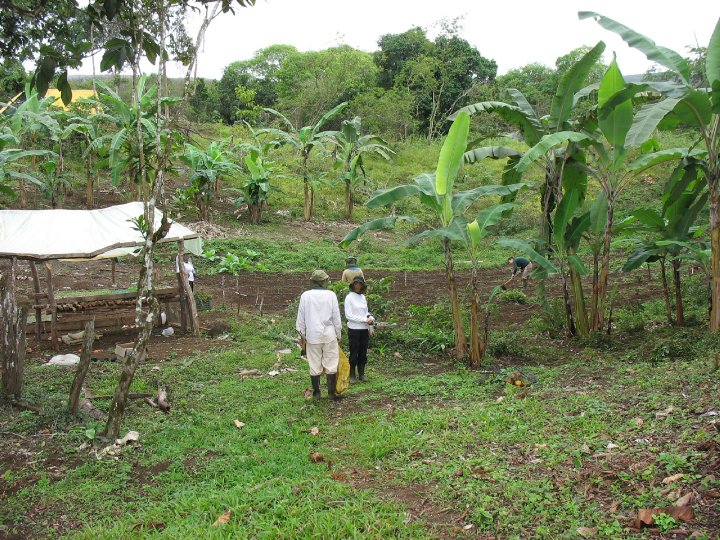
This week of the program is the bulk of volunteering. In addition to those on the trip, volunteers are joined by others from around the globe working at the station. There are dorm-style sleeping quarters, which can sleep up to 30 people. Scrumptious meals are prepared from produce grown on-site and then eaten in a community setting. Expect days of sweat and laughter followed by nights of peaceful enjoyment and satisfying company.
After work and before dinner, there are opportunities to hike to waterfalls or to grab a drink at the local watering hole, a 20-minute walk from the station. Work ends on a Thursday, and volunteers go to the port town and stay in a centrally-located hostel. Friday, Saturday, and Sunday are free days to explore and participate in active adventures until Monday, it's time to catch the speedboat to Isabela Island.
Where to Eat on San Cristóbal
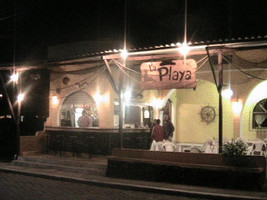 Located on Av. De la Armada opposite Playa de los Marionos, La Playa Restaurant is a great place to relax and enjoy a great lunch. The menu includes lobster, fresh ceviches, and sandwiches. Prices range from six dollars for ceviches to $15 for the more extravagant dishes. Beers cost about two dollars.
Located on Av. De la Armada opposite Playa de los Marionos, La Playa Restaurant is a great place to relax and enjoy a great lunch. The menu includes lobster, fresh ceviches, and sandwiches. Prices range from six dollars for ceviches to $15 for the more extravagant dishes. Beers cost about two dollars.
Located on Juan Jose Flores, Rokas and Kactu's Restaurant is a great choice for good value meals. Two dollar almuerzos consist of a local hearty soup, fresh juice, and a main dish of beef or chicken served with rice and plantains. On Friday, Saturday, and Sunday night, the restaurant has a barbecue of chicken, pork, beef, and fish for five dollars.
What to Do on San Cristóbal
Rent a mountain bike for 10 dollars a day and head out of Puerto Baquerizo Moreno on the west side of town on the only road which connects to Puerto Chino, a small beach located on the east side of the island. The trip is strenuous but worthwhile for the scenery overlooking outcropped cliffs and the sea. This beach is one of the first places that Darwin discovered and is famous for the birds that call it home. Most travel companies and hotels have bikes for rent and can arrange tours to here as well.
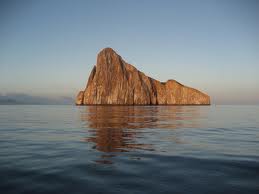 A day trip to Kicker Rock is another exciting option for adventurers. This giant natural rock formation rises 500 feet out of the ocean and is well worth seeing. A day trip stops at two other sites, the Man-O-War bird nesting site Las Tejorias and Isla Lobo, a sea lion breeding ground. Swim with the playful animals and enjoy the cool waters before heading off to the last stop. Once at the famous attraction, snorkel around the formation and play alongside blue-footed boobies. The trip costs 50 dollars per person through Sharksky Tours and leaves at 7:30 in the morning, with lunch included.
A day trip to Kicker Rock is another exciting option for adventurers. This giant natural rock formation rises 500 feet out of the ocean and is well worth seeing. A day trip stops at two other sites, the Man-O-War bird nesting site Las Tejorias and Isla Lobo, a sea lion breeding ground. Swim with the playful animals and enjoy the cool waters before heading off to the last stop. Once at the famous attraction, snorkel around the formation and play alongside blue-footed boobies. The trip costs 50 dollars per person through Sharksky Tours and leaves at 7:30 in the morning, with lunch included.
El Junco is the Galapagos only permanent fresh water lake and is located within the large caldera of a volcano. Hiking here takes about three and a half hours and passes through the original settlement of El Progresso, which is now a sleepy farming town in the highlands of San Cristobal. One of its crops is coffee, and visitors are welcome to lunch at a family-run hacienda known for its special brand of beans, provided reservations are arranged in advance.
Week Three- Isabela

The last week of the program takes place on Isabela and combines sightseeing and visits to popular attractions with free days to enjoy one’s own itinerary. Isabela is the site to a former penal colony, but today its charming town and its amazing natural attractions make it a favorite among travelers.
The first three days are busy. Volunteers visit the Giant Tortoise Breeding Center, where they can see lagoons with pink flamingos and lizards basking in the sun. Once at the center, visitors see three different kinds of tortoises. After lunch, the trip takes a historic turn, with a visit to the Wall of Tears, which was built as punishment for the prisoners who were sent to the island. The path on the way to the wall has clearly-marked points of interest that will lead adventurers to beaches with pelicans and blue-footed boobies. Further down the trail lies a series of lagoons with exciting hues, and finally travelers pass Playa de Amor, where iguanas lay their eggs. At the end of the journey is the wall itself.
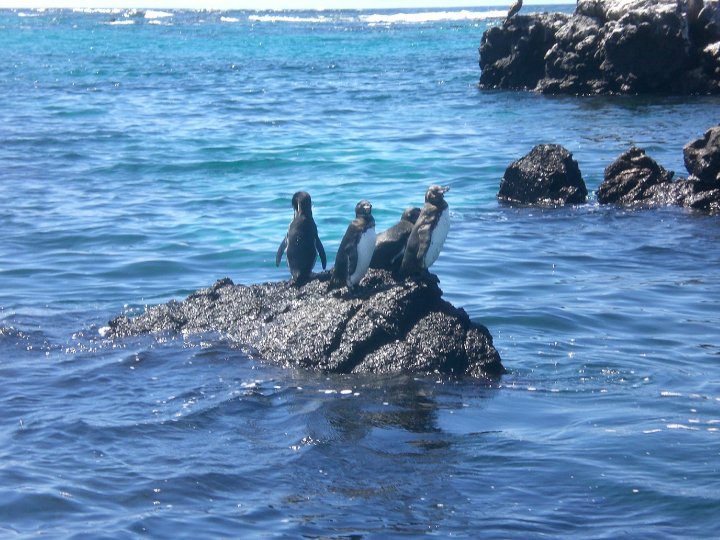
The next two days on the island are mix of land and sea adventures, with guided boat tours of the bays and a trip to Las Tintoreras, where penguins, sharks, and sea lions relax in between rock formations. A stunning tour of the island's volcano provides breathtaking views and a chance to see out-of-this-world lava formations. The last two days are devoid of tours, meaning free time for diving, snorkeling, biking, day trips by boat, or biking the island's well-maintained trails.
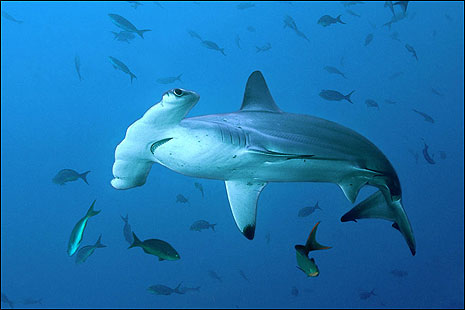
The program ends on a Saturday, with volunteers being transported to the airport by boat early in the morning for their return to Quito in the afternoon. Guests are free to extend their travel plans, or to take advantage of transportation arrangements designed to get everyone to the airport. Additional time on the islands can be arranged, too.
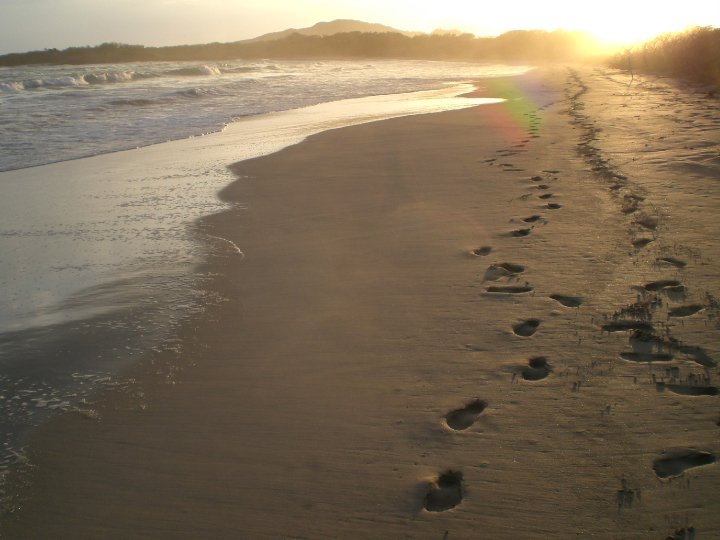
Where to Eat on Isabela
While two meals are served daily as part of the volunteer program, travelers are on their own for lunch. Here are a few places to get started.
Bar de Beto is a hip beachfront bar that serves up fresh seafood and snacks as well as a wide array of tempting cocktails. Try the vegetarian lasagna, lobster when it’s in season, or mote de ajillo with shrimp, chicken, or beef. Known for a lively atmosphere that includes the owner's blues collection playing in the background, it's an all-around fun spot.
Located in the center of Puerto Villamil opposite three large satellite antennas, Carabali is a family-run restaurant that offers fresh seafood in a quaint setting. Try the octopus dishes or ceviches with shrimp or fish. Known more for its chef than its amenities, it’s the perfect spot to get off the beaten track and enjoy local cuisine done well. To check hours, as island time tends to wander, call the owner, Sra. Ramona: 085723265. Prices range from four to 14 dollars.
What to Do on Isabela
Scuba Dragon arranges day dive trips to Tortuga Island, La Viuda, Roca Union, and the four Hermanos Islands. Two dives are included, as well as lunch and transportation by speedboat. Rates vary according to the destination, but are comparable with those of operators on San Cristobel. Scuba Dragon is run by a French Padi-certified dive master with 25years of experience diving worldwide. Certification trips are also available.
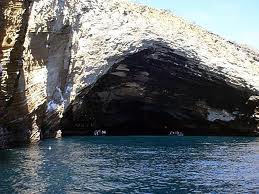 For exciting environment, nothing beats Urvina Bay. In 1954, a geological event caused a mass of land to lift out of the water of the shallow bay. Turtles and penguins are likely sights on most days and the trip here is itself refreshing, as it covers coastal trails.
For exciting environment, nothing beats Urvina Bay. In 1954, a geological event caused a mass of land to lift out of the water of the shallow bay. Turtles and penguins are likely sights on most days and the trip here is itself refreshing, as it covers coastal trails.
For nature lovers, a hike to Tagus Cove, a bay within a volcanic crater, is essential. The cove was a favorite spot for pirates to dock, and it still bears the names of the ships scrawled into rocks along its banks. Today, cruise ships dock here and their passengers take the hike to the top of the rim for the stunning view.
Puerto Villamil is one of the Galapagos’ best kept secrets. The small fishing village is on the southwest side of the island. Its beach is the perfect place to spend a day playing in the waters or enjoying the seclusion of the two-mile beach. Due to its size, it rarely gets crowded and is popular with sea and wildlife as well as local fisherman, who make their living here. The town itself has a few beachside restaurants. It's important to bring cash, as the bank’s ATM is known for running out of money frequently.
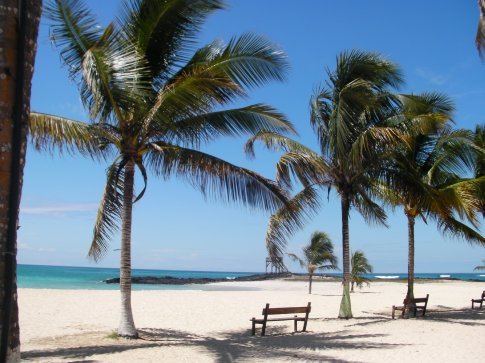
Program Details and Costs
This volunteer program always starts on a Monday, with travelers arriving the weekend before. Once at the Quito Airport, they are transported to a well-run hostel close to the tourist center of Quito and then to the Lead Adventures office. On Monday, orientation starts. Tuesday, volunteers fly out of Quito to Santa Cruz.
The cost of the entire program for three weeks is $1790, with an additional $100 for park entrance and $450 for the roundtrip flight to the Galapagos from Quito (the cost of your flight to Quito is additional). More nights on the islands after the trip is finished and add-ons such as Spanish lessons and insurance are also available. For more information about the program check the Lead Adventures website or email Jon.Jared@lead-adventures.com for information.

Related Posts
Galapagos Adventure: Stunning Wildlife, Fearless and Up Close
Seychelles Award Travel with Miles and Points and Where to Stay
Need Award Booking Help? Our fee is as low as $75 per ticket if you book your hotel through us.
If you enjoyed this, join 90,000+ readers: please follow TravelSort on Twitter or like us on Facebook to be alerted to new posts.
Become a TravelSort Client and Book Your Hotel with Virtuoso or Four Seasons Preferred VIP Amenities!
Photos: Jon Jared, LEAD Adventures